BLOG
What is a shelter-belt and what is its purpose?
In the context of properties, for example, farm/agricultural land, large scale parks or any other large surface areas of land that are generally open to prevailing winds and mostly used for livestock grazing, agricultural growing fields/meadows/nursery installations, exposed coastal areas and open/large recreational parks/spaces.
The ultimate purpose of a shelter-belt system is to screen, divert, block and dampen prevailing wind forces (which can manifest from different directions based on specific geographical locations around the planet, and differ in intensity and behavior depending on the season and topographical makeup of the local and surrounding land formations and other natural and man-made factors), using a vegetation based strategy commonly consisting of tall wind (and pollution) tolerant trees and shrubs. The typical shelter-belt that is most commonly seen, for instance, when traveling to the countryside, is planted parallel to and along a highway or country road and near railway lines. In the regions surrounding Montreal (that I’m familiar with), one will notice shelter-belts that are planted more in a traditional straight row configuration (perpendicular to the direction of prevailing winds), with usually a mono-culture planting arrangement of trees such as Columnar Oak (Quercus robur ‘Fastigiata’), Red Maple (Acer rubrum), Lombardy Poplar (Populus nigra) and Spruce varieties such as white Spruce (Picea glauca).
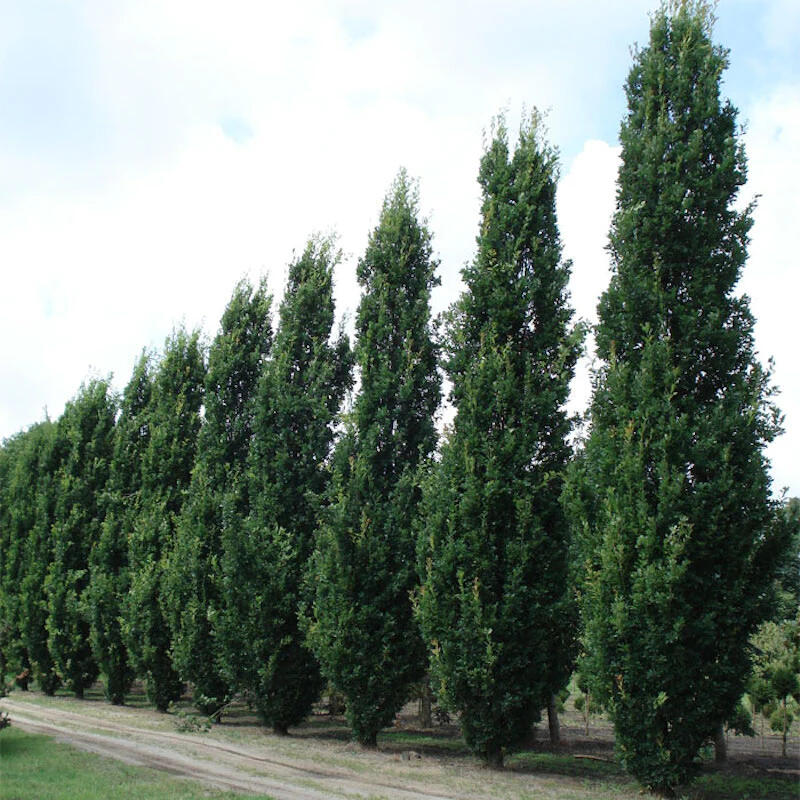
Columnar oak

Lombardy poplar
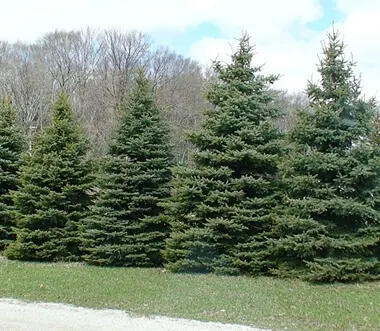
White Spruce
Traditional vs Permaculture (Polyculture) Shelter-belt system
As mentioned above, traditional shelter-belt plantings most commonly seen, use mono-culture types of tree systems (mostly trees and not large shrubs) including a limited choice of species and varieties (e.g as described and shown above). Although the more traditional type of shelter-belt system performs its main wind screen function quite well, especially when properly planned and planted, this system offers a one-dimensional benefit to the farmer-property owner-manager.Conversely, a Permaculture (or Polyculture) approach offers a wide range of benefits besides serving the critical function of acting as a wind buffer (as well as providing a soil erosion strategy).
What are the added benefits of a Polyculture Shelter-belt system?
1. The option to design, plant, grow, integrate and harvest fruit, nut, nitrogen fixing, pollinators, biomass accumulators and other beneficial species as part of a shelter-belt system (aka alley cropping). Thus, adding an edible component to the shelter-belt(s) and farm-homestead-foodforest-etc property. Think of this option as a method of integrating a foodforest/orchard guild component to a shelter-belt, thus stacking up multiple functions into the system. Depending on what the situation and needs are, one could plan to produce and harvest yields for personal/family use and/or for sale and/or barter as a way for strengthening and enhancing one’s resilience and add to the farm-homestead economy.
2. The option to use the spaces around and at the base of shelter-belt trees and shrubs, as nursery planting zones. This is an interesting method of utilizing unused spaces situated in between windbreak trees, especially when trees are planted early on and are establishing; there is usually ample enough planting space in between young trees in the early stages of a shelter-belt planting (e.g. sometimes 30ft/10m in between planted specimens in a large system), in order to start planting nursery style plants, shrubs and trees (e.g. for use in in-situ shelter-belts and in other parts of the farm-homestead-etc property or for potential future sales/bartering/etc – again: resilience!).
3. The option to create forage and fodder zones for livestock in parts of a shelter-belt row or system (aka silvopasture). This option obviously applies to farm and homestead properties that integrate livestock into its operation and system. Again, with the idea of stacking multiple functions into a system, one can plan, plant and integrate fodder oriented trees and shrubs into different parts of a shelter-belt row, to serve as foraging areas for livestock. However, with this approach, it is highly recommended to protect young shelter-belt specimens from foraging livestock with a tutor system using wire mesh or plastic snow fencing material (as tall as the young tree specimens), until the young shelter-belt trees (and large shrubs) attain maturity and are tall enough for trunks and branches to escape the hungry mouths of foraging livestock. With that in mind, plan on establishing fast growing and hardy fodder specimens that are indigenous (or can be naturalized in your zone) especially on the edges or borders of the shelter-belt rows, where livestock can hang out and feed.
4. The option to build and maintain soil health in shelter-belt rows and systems. Linked to option No.1, one could create and integrate soil health-building plant guilds to shelter-belt systems. Integrating nitrogen fixing, biomass accumulating and pest resistant specimens such as Comfrey, River locust, Wild rose shrubs, Siberian peashrub, Garlic and Daffodils, to name just a few, will immensely improve soil health and repel pests from attacking the main shelter-belt tree and shrub specimens. Also plant and utilize living mulch ground-cover plants and mulch generously around and in between specimens with natural wood chip mulch and/or non-chemical sprayed straw.
5. The option to add and improve shelter-belt systems in order to act as sound pollution barriers. Although less of an issue in more remote rural areas, one can greatly improve and solve a sound pollution situation by creating shelter-belts in the manner proposed in this blog, while stacking an additional function; sound barrier shelter-belts can be more effective when installed in Permaculture zone 2 or 3 scenarios near and/or around the main farmhouse-homestead (again, adding edible vegetation elements to these sound barrier shelter-belt rows).
6. The option to install and integrate shelter-belt rows on land contours. Planting on land contours to control soil erosion is an entirely other subject that would take up too much space here. Suffice it to say, that one can stack more Permaculture style functions by planting shelter-belts on coutour; namely a more high-end method of managing soil erosion and water flow on the land, while exploiting the additional benefits of integrating shelter-belt foodforest/edible guild components to the rows and potentially introduce fodder vegetation for the livestock farmer-homesteader.
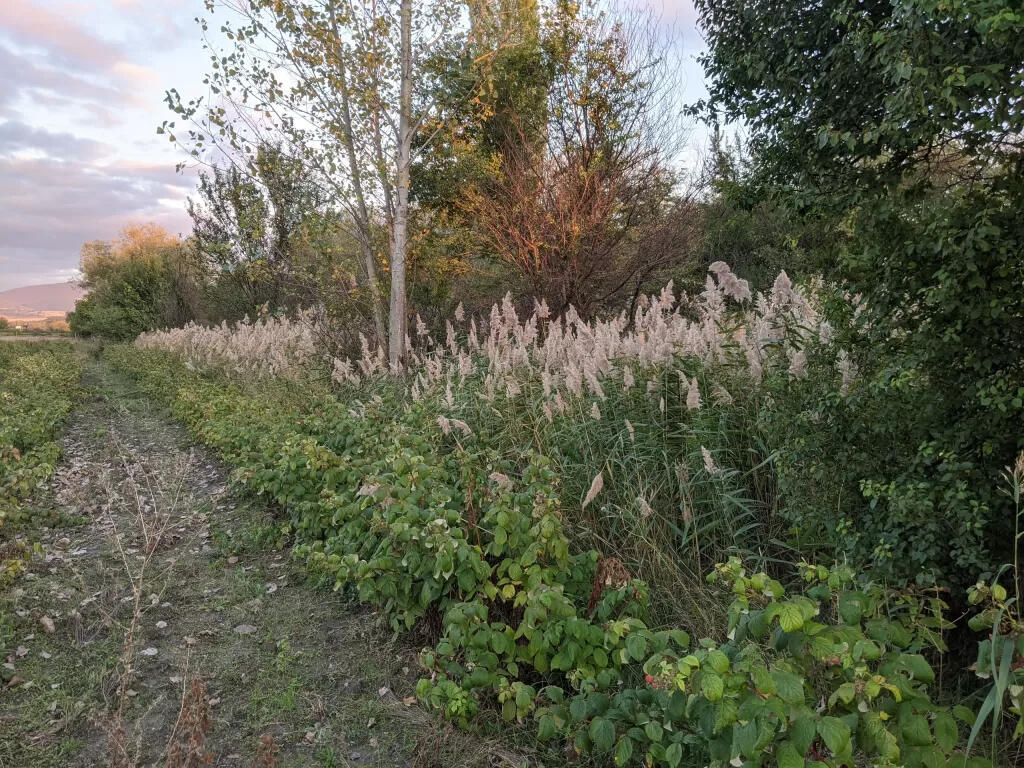
Mixed species shelter-belt
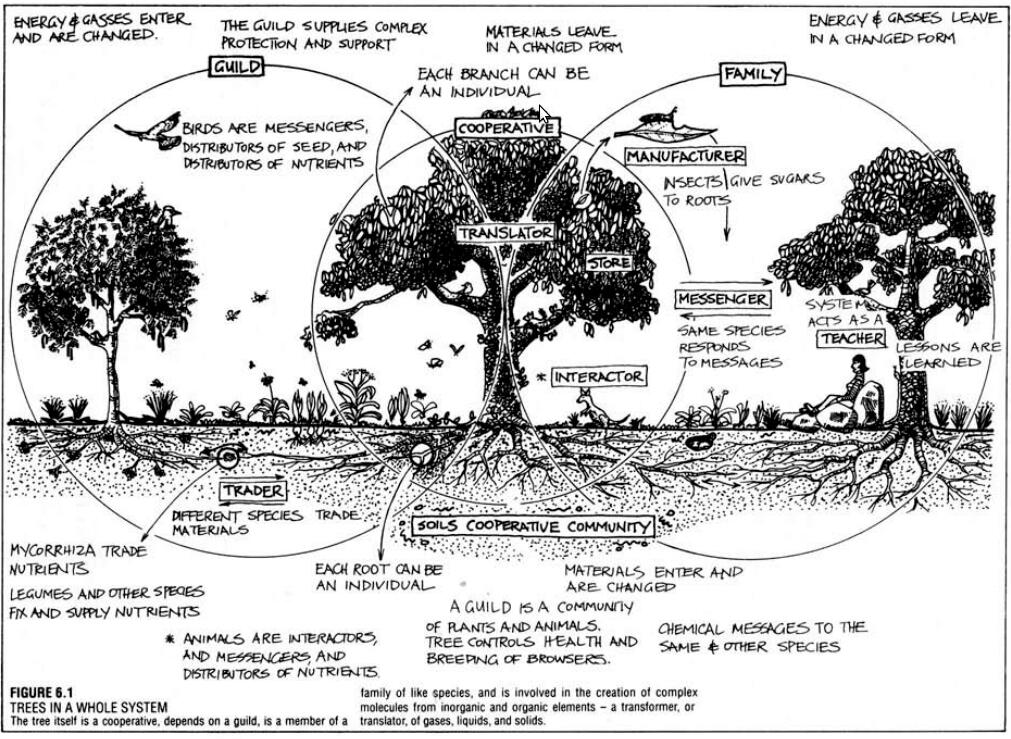
Permaculture Planting Guild

Planting in Shelter-belt Row
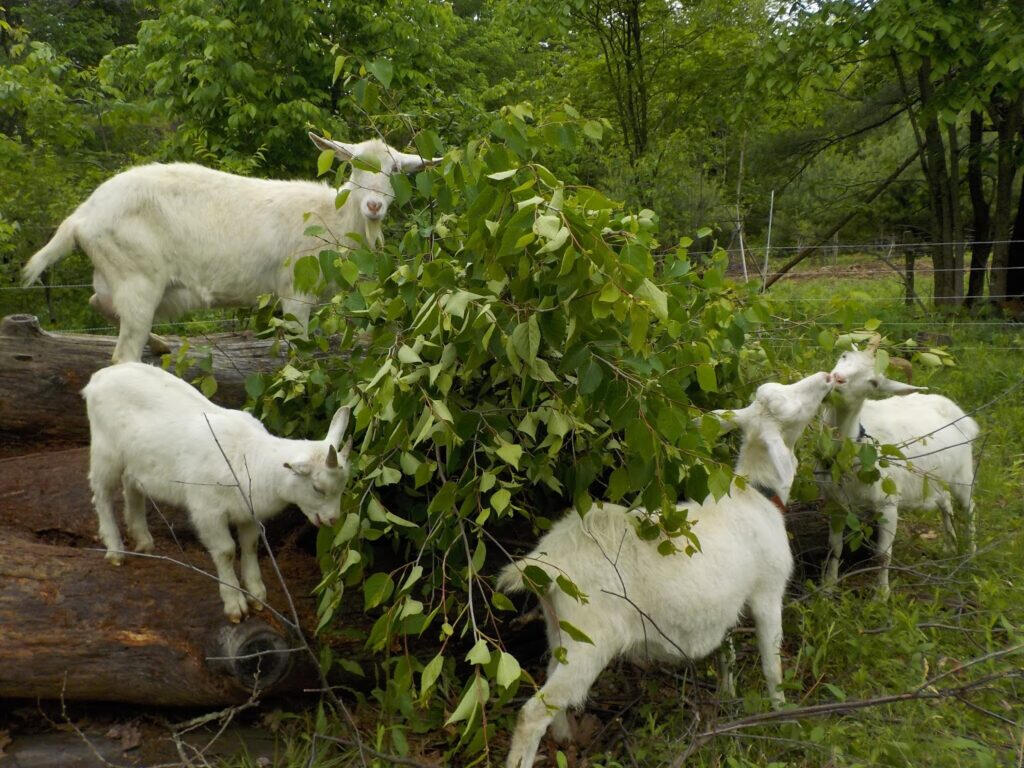
Livestock Fodder
A few Tips and Tricks
1. Plan ahead. Establish where shelter-belts are critically needed (e.g. near gullies, close to roads and open areas, near river and lake shores, at the bottom of hills and mountain ranges, etc. Determine where the most damaging winds (and sound pollution) are coming from and start with that basic information.
2. When designing a shelter-belt, be mindful of the environmental conditions and surrounding obstacles and site features, such as power lines, buildings and infrastructure features and structures, neighboring property features and infrastructure, and avoid considering planting invasive plant and/or dangerous (poisonous and toxic) species (try sticking more often than not with local and indigenous species).
3. When preparing the shelter-belt soil beds, use the native in-situ soil and create a row-like mound stretching along the length of the shelter-belt row (the higher, the better. 12 to 16in is acceptable to start off with). Remove as many rocks and other non-organic objects from the soil as the beds are being built.
4. Determine according to the shelter-belt design/plan, where each tree and shrub species will be planted. Dig a hole large and deep enough for each specimen. Note: each specimen has different planting specifications, whether the specimen format is bare-root, in a pot or in wire-basket root ball form. If the budget is critical and time is not a huge concern or factor, then bare-root is the way to go, with a greater survival rate. But, remember that bare-root fruit and nut trees can take longer to reach maturity and/or fruit and nut production viability (depending on the species and varieties, anywhere between 5 to 10+ years). A suggestion, if the budget permits, is to mix and match larger tree specimens obtained in 5-7 gallon pot formats with bare-root format specimens in the shelter-belt rows. I recommend using and adding a mycchorizal fertilizer (in powder-like form) when planting pretty much all manner of plants, trees and shrubs.
5. Very important: after planting the shelter-belt trees and shrubs, securely attach each specimen to a metal tree tutor post (e.g. T-bar style post securely installed approx. a few feet/60cm into the soil) and wrap a protective wire or plastic mesh (e.g. a snow fence mesh material) around the tutor and newly planted tree or shrub (use zip-ties to attach the mesh to the tutor). The tutor and mesh tree/shrub protection will provide a fighting chance primarely against deer predation and other smaller rodents and animals (also: wrap a plastic protection sleeve around the base of each specimen in the Fall time and remove said sleeve the following Spring, in order to protect the young trunks from voles and other rodents).
6. Lastly, add a top layer of compost soil (if it is available) to the shelter-belt beds. But, do generously mulch around and in between each newly planted specimen, and regularly mulch in subsequent seasons (natural wood chips and/or non-chemically sprayed straw). Also, generously water the beds (making sure a water source is available in-situ).
RECOMMENDED RESOURCES
Books:
Permaculture: A Designers’ Manual. Legendary Permaculture bible by the G.O.A.T. Bill Mollison. Windbreaks, p.386-387.

Restoration Agriculture: Real-World Permaculture for Farmers. By Mark Shepard
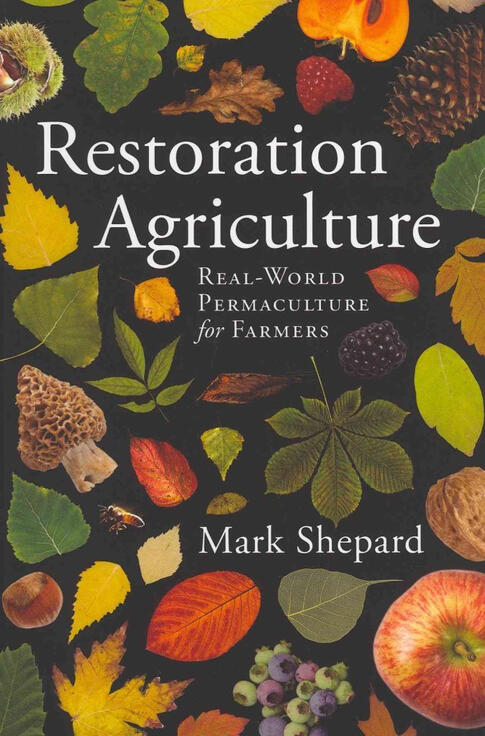
VIDEOS
Multifunctional Windbreaks - Govt of Ontario
Agroforestry, Windbreaks & More - Mark Shepard
Pierre Duranleau
Permaculture, Landscapes & Gardens: Designer, Consultant, Implementer, Practitioner & Trainer
Pierre Duranleau - Copyright/Tous droits réservés - 2025

